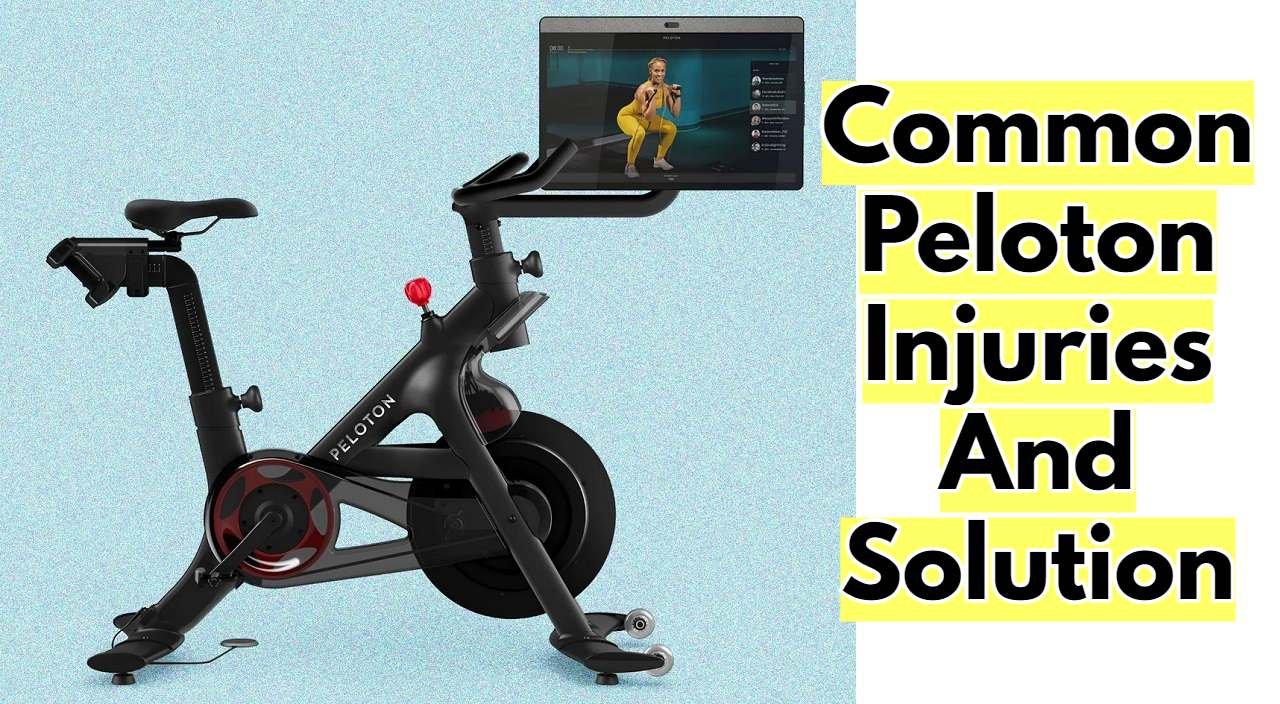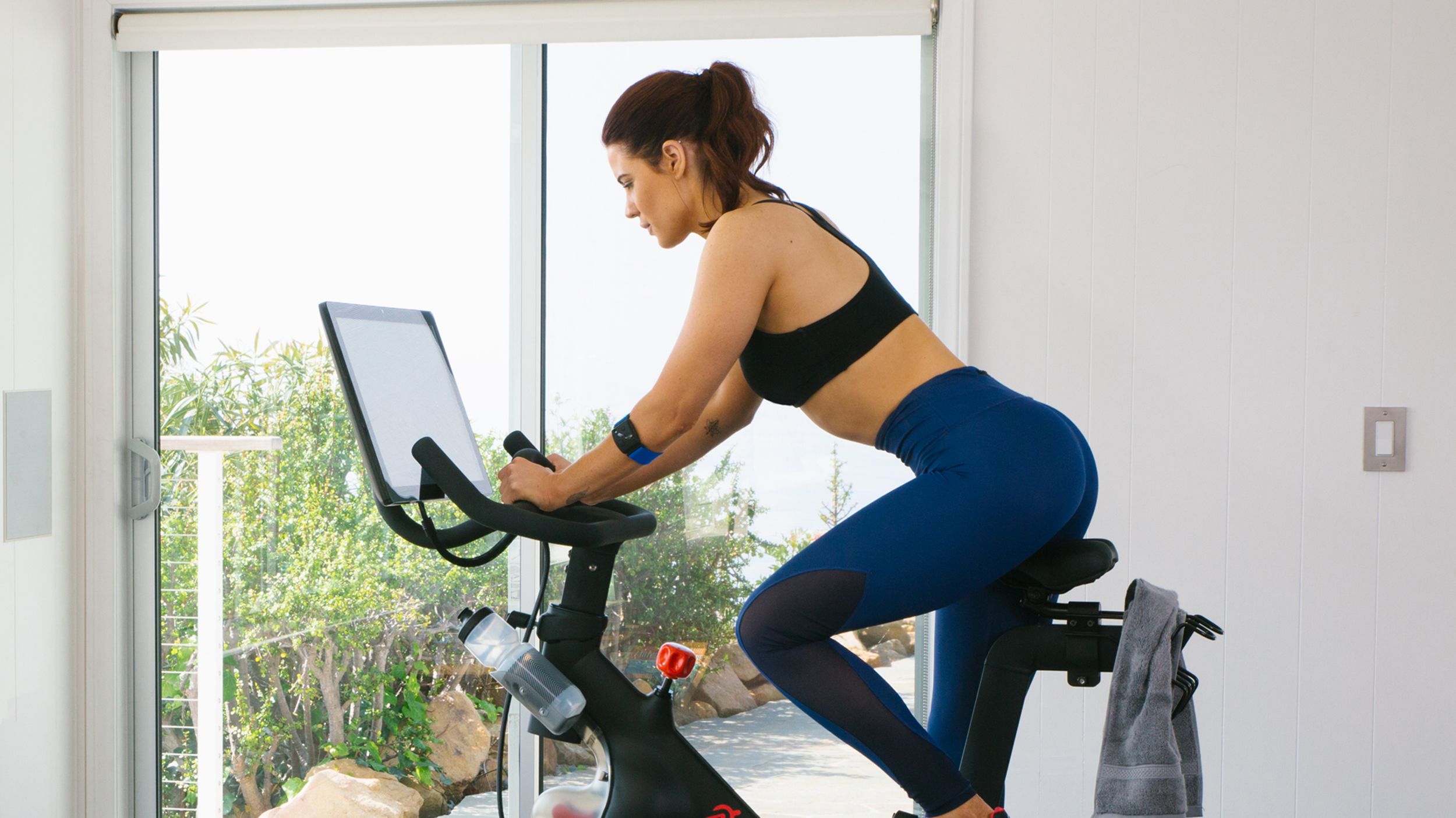Peloton is a popular at-home workout system, but as with any workout regimen, there’s a risk of injury. The most common Peloton injuries are knee and shoulder pain, according to a recent study. Knee pain is the most common complaint, followed by shoulder pain.

As a whole, the common peloton injuries are Knee pain, Saddle and butt pain, Foot pain, Hip pain, Arm and shoulder pain, Back pain. Leg pain.
The good news is that there are solutions for these common injuries.
If you’re experiencing knee pain, the first step is to adjust your bike seat height. The second step is to make sure your knees are tracking in line with your toes when pedaling.
You can also try using a gel seat cover or padded shorts to help reduce pressure on your knees. If you’re still experiencing pain, it’s important to see a doctor or physical therapist to rule out any other potential causes of knee pain such as patellar tendinitis or IT band syndrome. Shoulder pain is another common complaint among Peloton riders.
Also Read:
Does Peloton Have Trx Workouts?
Does Peloton Have Postpartum Workouts?
Does Peloton Have Kettlebell Workouts?
What Muscles Does Peloton Work? Explained
Does Peloton Have a Rowing Machine? or Just Offer Classes?
Does Peloton Have Elliptical Machine? or Just Offer Classes?
This can be caused by poor posture during workouts or incorrect handlebar positioning. To fix this, make sure you keep your shoulders down and back when riding and adjust your handlebars so they’re level with your saddle (or slightly below). You may also want to try using shorter handles which will force you to keep your elbows close to your body while riding.

If you’re still having shoulder pain, again, it’s important to see a doctor or physical therapist to rule out any other potential causes such as rotator cuff tendinitis or bursitis.
Peloton is a great way to get in shape, but like any workout, there is a risk of injury. The most common injuries are knee and shoulder pain.
Here are some tips to prevent these injuries:
1. Use proper form when cycling. This means keeping your back straight and your knees aligned with your toes.
2. Don’t push yourself too hard. Ease into your workouts and increase intensity gradually.
3. Warm up before you ride and cool down afterwards. Include some stretching in your routine to keep your muscles loose and flexible.
4. Listen to your body. If you start to feel pain, stop riding and rest until the pain goes away completely. following these tips should help you avoid peloton-related injuries so you can keep enjoying your workouts!
What Is The Most Common Injury Related To Indoor Cycling Class?
Indoor cycling, also known as spin class, is a popular workout option for people looking to get their heart rate up and burn some calories. However, like any type of exercise, there is always the potential for injury. The most common injury related to indoor cycling class is knee pain.
This is usually caused by improper bike setup or incorrect pedaling technique. If your bike is not properly adjusted to fit your body, you can put unnecessary strain on your knees. Additionally, if you are pedaling with too much force or not maintaining a consistent cadence, you can also end up with soreness or pain in your knees.
If you are experiencing knee pain after indoor cycling class, the best thing to do is rest and ice the area for 20 minutes at a time. You may also want to consider taking an over-the-counter anti-inflammatory medication such as ibuprofen. If the pain persists or gets worse, it’s important to see a doctor so they can rule out any other possible causes of your knee pain.
Why Does My Knee Hurt After Peloton?
If you’re a Peloton fan, you might be wondering why your knee hurts after a workout. According to experts, there are a few reasons why this might be happening. First of all, it’s important to make sure that you’re using the proper form when riding the Peloton.
If you’re not sitting up straight or if your knees are too far forward, this can put unnecessary strain on your joints and muscles, which can lead to pain. Another reason why your knee might hurt after a Peloton workout is because of the high-intensity nature of the workouts. When you push yourself hard during exercise, it’s not uncommon for your muscles and joints to feel sore afterwards.
This is especially true if you’re new to Peloton or if you’re increasing your intensity level. Finally, it’s possible that something else entirely is causing your knee pain. If the pain persists despite taking these precautions, it’s best to consult with a doctor or physical therapist to rule out any other underlying issues.
Can The Peloton Bike Hurt Your Knees?
The Peloton bike is a great way to get in a workout at home, but some people have reported that it can hurt their knees. There are a few possible reasons for this. First, if you’re not used to riding a bike, the pedaling motion can be tough on your knees.
Second, the seat on the Peloton bike is higher than most exercise bikes, which can put more stress on your knees. Third, the resistance on the Peloton bike is much higher than most exercise bikes, which means you’re working your legs harder and potentially putting more strain on your knees. If you’re concerned about hurting your knees on the Peloton bike, there are a few things you can do to minimize the risk.
First, start slowly and increase your workouts gradually to give your body time to adjust to the new activity. Second, make sure you’re using proper form when riding and keep your knees aligned with your feet (don’t let them cave inward). Third, use a lower resistance level until you build up more strength and endurance.
And finally, if you start to experience pain in your knees while riding, stop immediately and consult with a doctor or physical therapist to find out if the Peloton bike is right for you.
Knee Pain From Your Peloton Bike? Here’s The Fix With Kelly Starrett!
Conclusion
Peloton, the popular at-home cycling system, has come under fire recently for a number of injuries its users have sustained while using the equipment. While some of these injuries are due to user error, others seem to be caused by design flaws in the Peloton itself. In this blog post, we’ll take a look at some of the most common injuries associated with Peloton use, as well as how to avoid them.
One of the most common injuries associated with Peloton is knee pain. This is often caused by incorrect bike setup, which puts strain on the knees. It can also be caused by riding too hard or too fast for your fitness level.
If you’re experiencing knee pain while using Peloton, make sure your bike is properly adjusted and take it easy until your body adjusts to the workout.
Another common injury is back pain, which can be caused by poor posture while riding. Make sure you keep your back straight and stay upright in the saddle to avoid putting strain on your back.
You may also want to try using a softer seat cushion to reduce pressure on your spine. If you start to experience any pain while using Peloton, stop immediately and consult a doctor or physical therapist before continuing your workout routine. With proper precautions and regular check-ups, you should be able to enjoy many hours of safe cycling on your Peloton without incident!